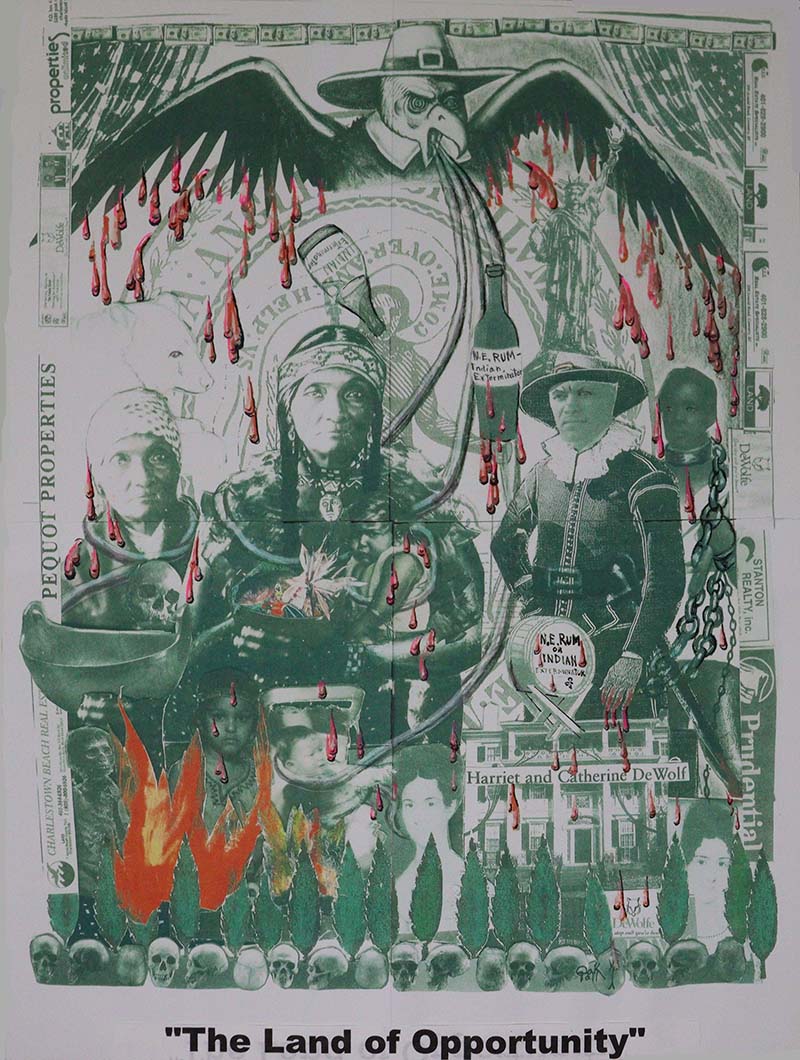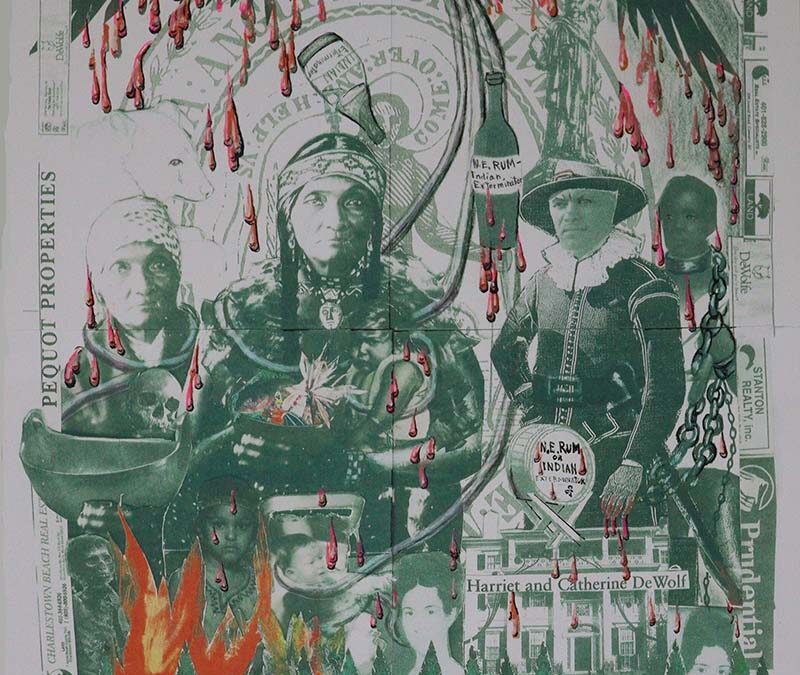The Land of Opportunity

| Maker | Everett G.”Tall Oak” Weeden, Jr. (1936-2022) |
| Date of Creation | 1990–2000 |
| Location | Rhode Island |
| Materials | Multimedia, paper, colored pencil |
| Institution | Tomaquag Museum |
| Credit Line | On Permanent Loan from the Estate of Everett G. Weeden, Jr. |
| Accession Number | 2023.INV.1907 |
| Photo Credit | Tomaquag Museum |
In the collage “The Land of Opportunity,” the Narragansett/Wampanoag/Mashantucket Pequot activist and artist Everett G. “Tall Oak” Weeden Jr. expresses truths about the United States of America from an Indigenous perspective. It reflects on the history of New England, European contact with Indigenous people, colonialism, slavery, and Indigenous disposession. It is steeped deeply in graphically horrific historic symbolism, such as its evocative framing by skulls and dollar bills. It also highlights the appropriation of Indigenous symbols by the US. For instance, the scene is overlooked by a bald eagle dressed as a pilgrim with blood dripping from its wings. It evokes the Great Seal of the United States which borrows its imagery of a bald eagle clutching a talon full of arrows from the Haudenosaunee (“People of the Longhouse”), who consider the bald eagle a sacred raptor.
This work is just one example of the activism for which Weeden’s legacy is revered. A member of the American Indian Movement, in 1970 he contributed to the establishment of the National Day of Mourning. Spurred by the censorship of a speech that Massachusett Governor Francis Sargent’s had invited Frank James (Aquinnnah Wampanoag) to give on the 350th Anniversary of the Pilgrims landing on Plymouth Rock, Whedon and other Indigenous activists convened at the landing site to hear James’ speech, deemed by government officials to be “too aggressive and too extreme,” and reclaim Thanksgiving as the National Day of Mourning, recognizing the impacts of this fabled colonial event on the First Peoples of the land now known as the United States.

